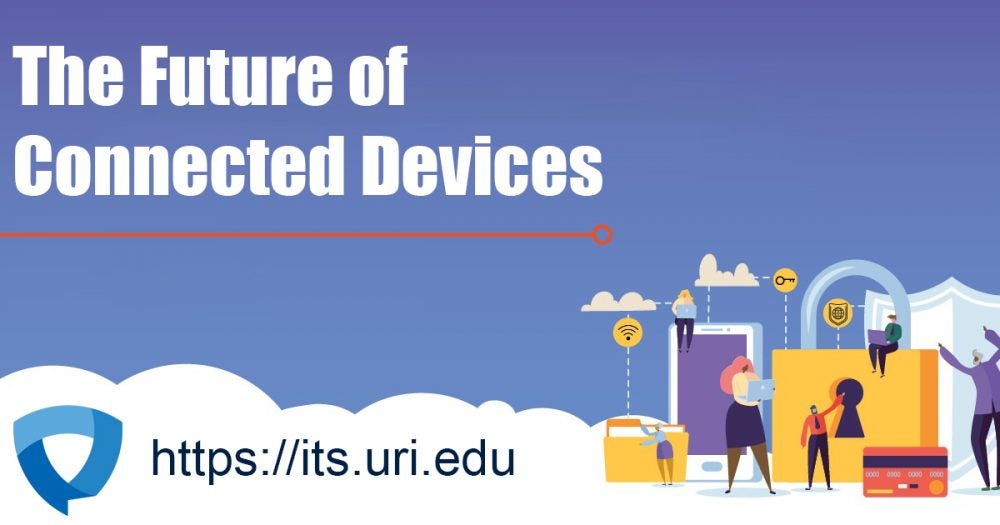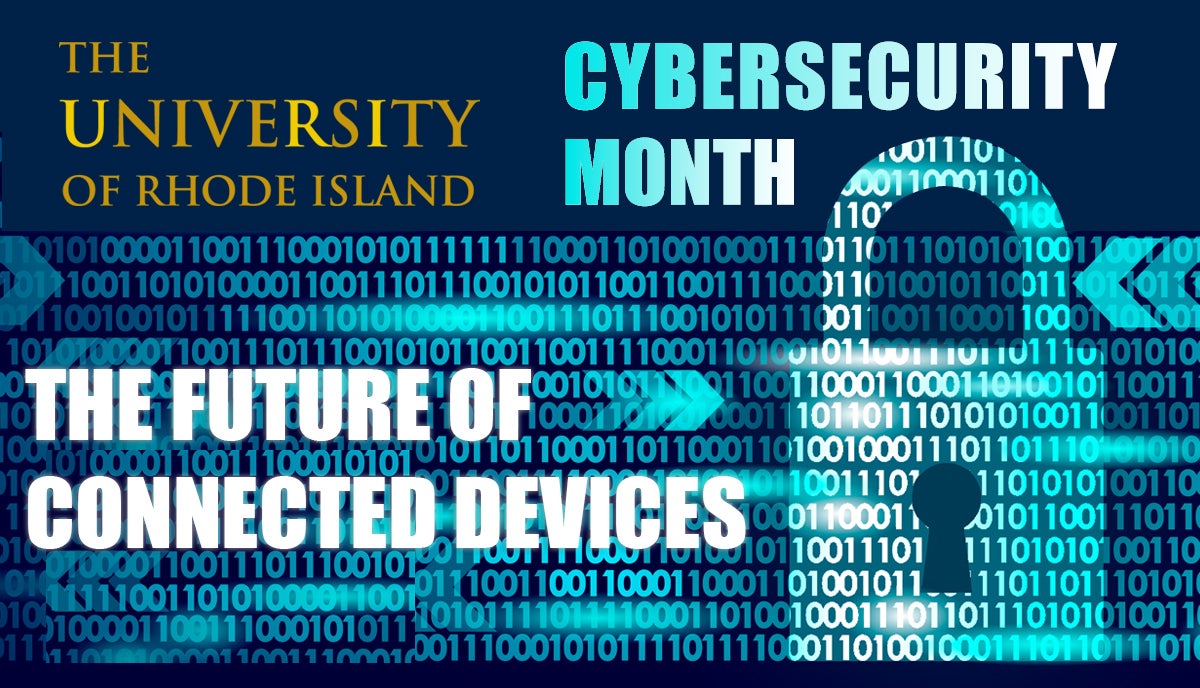As we wrap up Cybersecurity Awareness Month at URI we must shift our thinking that only computing devices are the only devices we must pay attention to for practicing safe and secure practices online. Now more than ever, we all spend increasing amounts of time on the Internet and we consume multitudes of data using multitudes of devices that we may not even be aware of that connects to the internet and shares all sorts of Personal Identifiable Information over the internet. With every social media account you sign up for, every picture you post, and status you update, you are sharing information about yourself with the world. Listening to music on a boombox using Spotify or sharing your physical activity for a route you ran while training for an upcoming marathon all utilize internet connected devices that form a network and share personal data. Even though your watch does not look like a computer or your blood pressure monitor is small and looks harmless it is necessary to secure to these devices.

The Internet of Things is becoming more prevalent and more and more devices are popping up such as connected doorbells and trackers for keys that allows you find them when you lose them. We bring some of these devices to campus and some of these devices are at home and we connect to them remotely to access their features remotely. Because these devices are ubiquitous we must pay attention to these devices and their settings to protect our data and protect our privacy.
WHY SHOULD WE CARE?
- Cars, appliances, fitness trackers and other wearables, lighting, home security, and more all contain sensing devices that can talk to another machine and trigger other actions. Examples include devices that direct your car to an open spot in a parking lot; mechanisms that control energy use in your home; and tools that track eating, sleeping, and exercise habits.
- New Internet-connected devices provide a level of convenience in our lives, but they require that we share more information than ever.
- The security of this information, and the security of these devices, is not always guaranteed. Once your device connects to the Internet, you and your device could potentially be vulnerable to all sorts of risks.
- With more connected “things” entering our homes and the University each day, it is important that we secure our devices.


